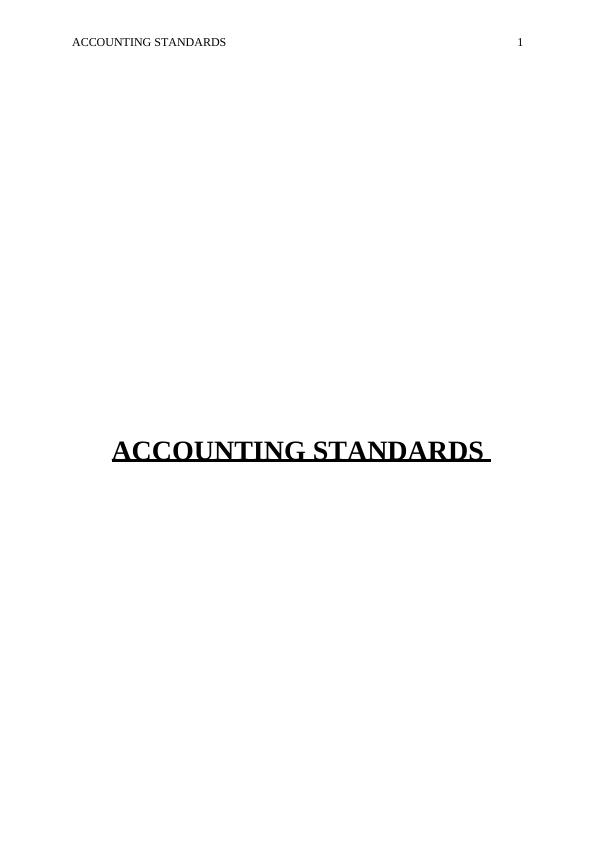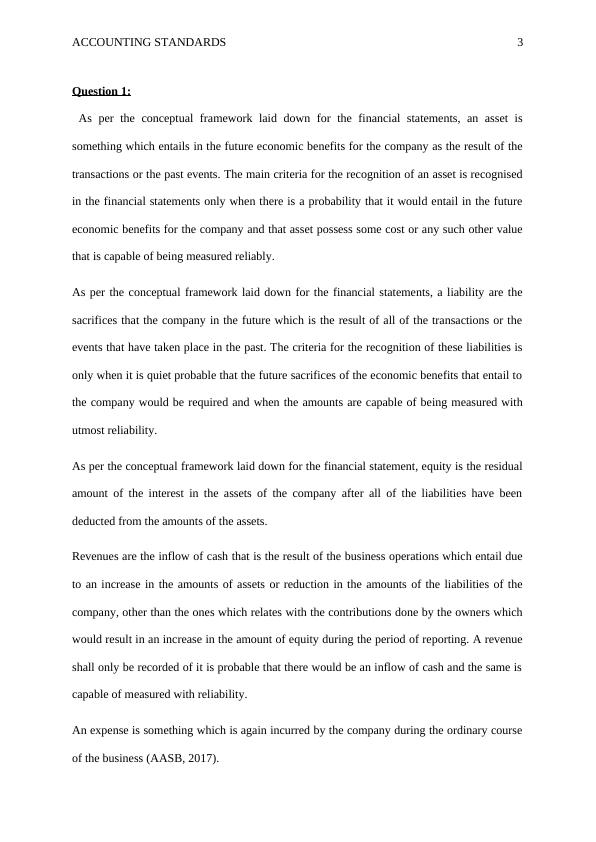Accounting Standards - Conceptual Framework for Financial Statements
8 Pages1674 Words83 Views
Added on 2023-06-06
About This Document
This article discusses the conceptual framework for financial statements, recognition criteria for assets, liabilities, revenues and expenses, and relevant accounting standards for property, plant and equipment and intangible assets. It also provides examples of how to apply these standards in practical scenarios.
Accounting Standards - Conceptual Framework for Financial Statements
Added on 2023-06-06
ShareRelated Documents
End of preview
Want to access all the pages? Upload your documents or become a member.
Accounting Treatment of Certain Items in Financial Accounting
|9
|1989
|145
AASB Standards and their Application in Accounting for Himalaya Ltd
|8
|2291
|276
Accounting Assignment Solutions and Answers
|10
|2128
|190
Accounting Treatment of Brands, Goodwill and Restructuring Costs
|7
|1462
|255
Rules and Requirements for Recording Contingent Liabilities and Intangible Assets
|6
|1155
|261
Accounting and Financial Reporting
|7
|1908
|51



